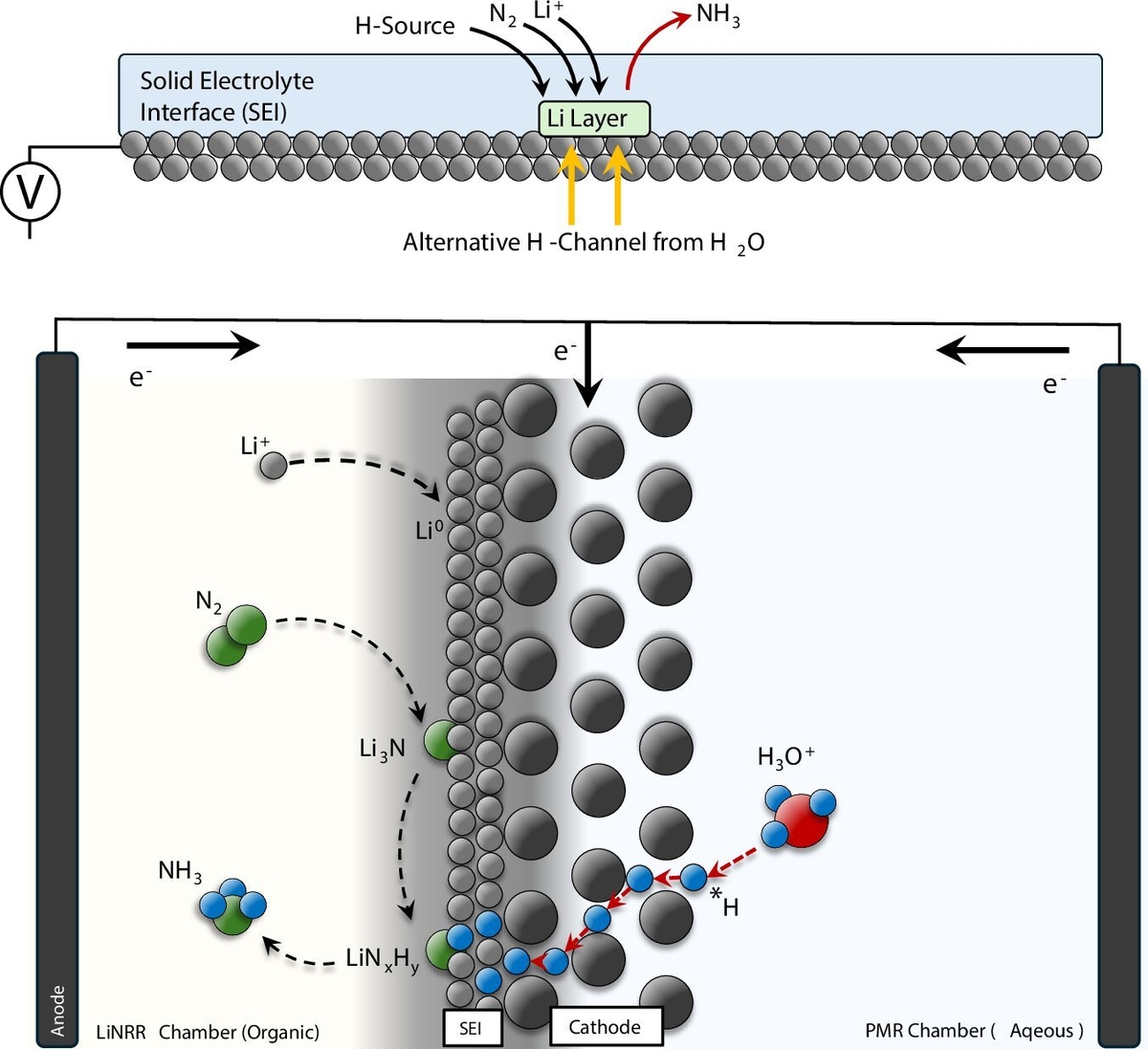December 8, 2025 | 09:26 GMT +7
December 8, 2025 | 09:26 GMT +7
Hotline: 0913.378.918
December 8, 2025 | 09:26 GMT +7
Hotline: 0913.378.918

Reactor overview. Credit: Nature Communications (2025). DOI: 10.1038/s41467-025-62088-z.
Until now, the Haber-Bosch process has been the method of choice for extracting nitrogen from the seemingly inexhaustible atmosphere and binding it in the form of ammonia. However, this method requires an extremely large amount of methane gas and energy.
Prof. Nikolay Kornienko from the University of Bonn has discovered a more climate-friendly alternative for producing ammonia from renewable energy sources. The findings are published in Nature Communications.
Like in the Garden of Eden, grain, beets, and potatoes should sprout as luxuriantly as possible so that plates are well filled. This is ensured by regular fertilization—especially with nitrogen. A source of nutrients that seems to never run dry. At the beginning of the 20th century, Fritz Haber and Carl Bosch developed a process that extracts nitrogen from the seemingly inexhaustible air. This achievement earned them the Nobel Prize in Chemistry in 1918.
Using an iron-based catalyst, very high pressure, and temperatures of up to 500 degrees Celsius, the Haber-Bosch process binds nitrogen from the air to hydrogen, producing ammonia. As an aside, some plants also master the art of binding atmospheric nitrogen with tiny bacteria in their roots and making it available for their growth. However, green plants do this in a climate-neutral way, whereas humans have not yet managed to do so.
"The Haber-Bosch process is extremely energy-intensive," says Prof. Dr. Nikolay Kornienko from the Institute of Inorganic Chemistry at the University of Bonn. Ammonia production is based predominantly on fossil fuels, which means that greenhouse gas emissions are correspondingly high.
"In order to achieve the goal of a sustainable and climate-neutral society, the search for alternative ammonia synthesis processes is a priority," says Kornienko, who is also a member of the transdisciplinary research area "Matter" at the University of Bonn.
Alternative methods? These have been experimented with for some time. The aim is to replace the Haber-Bosch ammonia synthesis with a process that uses renewable energy from sources such as the sun and wind. The hydrogen required would then no longer come from methane gas, but would be obtained directly from the electrical splitting of water (H2O) into hydrogen (H2) and oxygen (O2).
Does it sound simple? It's not. Anyone who wants to produce ammonia on a large scale using wind and solar power must navigate several pitfalls in the chemical reaction pathways.
"The lithium-mediated nitrogen reduction reaction (LiNRR) is considered the most robust way to electrify ammonia synthesis," says Hossein Bemana, the lead author of the study. In this system, lithium ions (Li+) are electrochemically reduced to a lithium metal layer. This lithium metal can then react with nitrogen gas (N2) to form a lithium-nitrogen compound.
If a hydrogen source is available, the lithium-nitrogen compound is converted into ammonia (NH3) and dissolved lithium ions. Then the process starts all over again. That's the theory, at least.
"We generally view this system as a model for the time being, as there are several practical difficulties," says Kornienko. Because high voltage is required to reduce lithium ions to metallic lithium, energy efficiency is limited to around 25%.
In addition, the system must operate in an air- and water-free environment, as lithium metal is highly reactive. Another challenge is that, similar to batteries, a porous solid electrolyte interphase (SEI) grows on the lithium layer. This layer must allow nitrogen gas and hydrogen to pass through as reactants to the lithium.
Phys

(VAN) At the TARASA25 Conference, participating countries shared experiences on implementing agroecology and regenerative agriculture, contributing to a sustainable transformation of food and agriculture systems.

(VAN) Green industry is becoming a driving force for the development of Hue City, not only promoting economic growth but also protecting the environment, creating the foundation for the Net Zero goal.

(VAN) As of 2025, the ASEAN region has a total of 69 ASEAN Heritage Parks recognized across its 10 member states. Among them, Viet Nam contributes 15 ASEAN Heritage Parks.

(VAN) Yok Don National Park has high biodiversity with numerous endemic plant and animal species, and it is also the only dipterocarp forest ecosystem conservation area in Viet Nam.

(VAN) Viet Nam and Brunei signed two important MOUs on fisheries and IUU, expanding cooperation in agriculture, the environment, and Halal exports, aiming to substantively implement joint projects.

(VAN) The Viet Nam Coconut Association worked with the International Finance Corporation (IFC) and businesses to promote the supply chain, enhance competitiveness, and develop the coconut industry sustainably.
![Hue aims for Net Zero: [2] Pioneering low-emission tourism](https://t.ex-cdn.com/nongnghiepmoitruong.vn/608w/files/huytd/2025/12/04/0633-dulichzero-4-095634_236-161125.jpg)
(VAN) The ancient capital of Hue has developed Net Zero tourism products and models, aiming to reduce carbon emissions and pioneer the establishment of Viet Nam's green tourism destination.